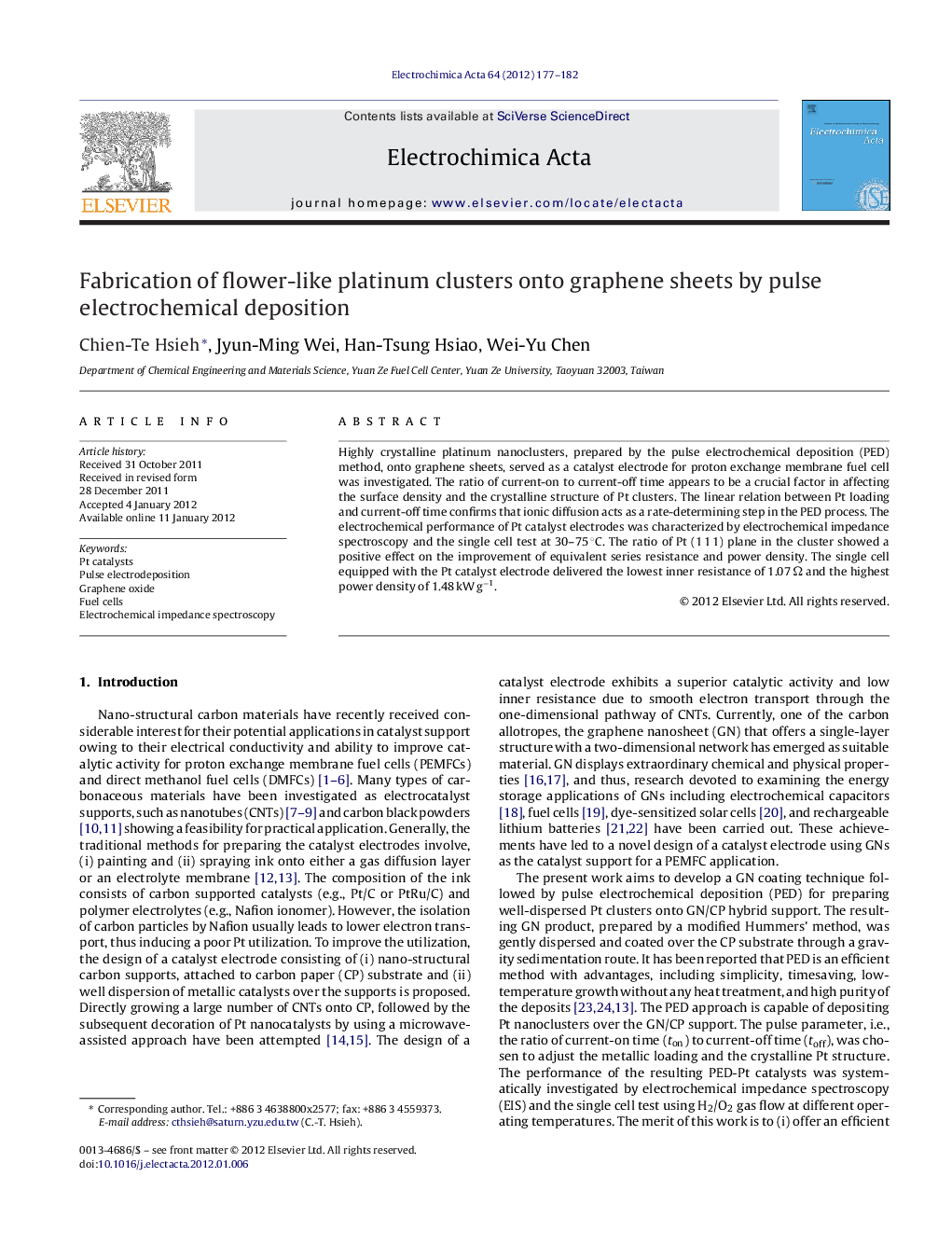| Article ID | Journal | Published Year | Pages | File Type |
|---|---|---|---|---|
| 189104 | Electrochimica Acta | 2012 | 6 Pages |
Highly crystalline platinum nanoclusters, prepared by the pulse electrochemical deposition (PED) method, onto graphene sheets, served as a catalyst electrode for proton exchange membrane fuel cell was investigated. The ratio of current-on to current-off time appears to be a crucial factor in affecting the surface density and the crystalline structure of Pt clusters. The linear relation between Pt loading and current-off time confirms that ionic diffusion acts as a rate-determining step in the PED process. The electrochemical performance of Pt catalyst electrodes was characterized by electrochemical impedance spectroscopy and the single cell test at 30–75 °C. The ratio of Pt (1 1 1) plane in the cluster showed a positive effect on the improvement of equivalent series resistance and power density. The single cell equipped with the Pt catalyst electrode delivered the lowest inner resistance of 1.07 Ω and the highest power density of 1.48 kW g−1.
